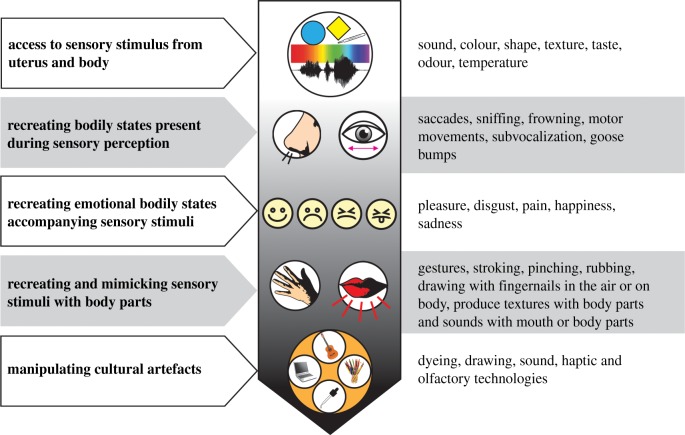Figure 1.
Degrees of embodiment of sensory stimuli. From top to bottom of the figure, there is increasing embodiment. Weak embodiment is exemplified by the re-creation of bodily states present during perception (e.g. sniffing). Strong embodiment, by contrast, involves direct simulation of the stimulus by the body—with or without tools. For example, it is possible to mimic visual objects by gestures, drawing in the air or literally on the skin by scratching with the fingernails or by using cultural artefacts like a pencil. It is also relatively easy to recreate auditory information using the vocal cords or by using other body parts to mimic a sound, or to create touch sensations, like pain, temperature and texture by pinching, stroking or rubbing.

